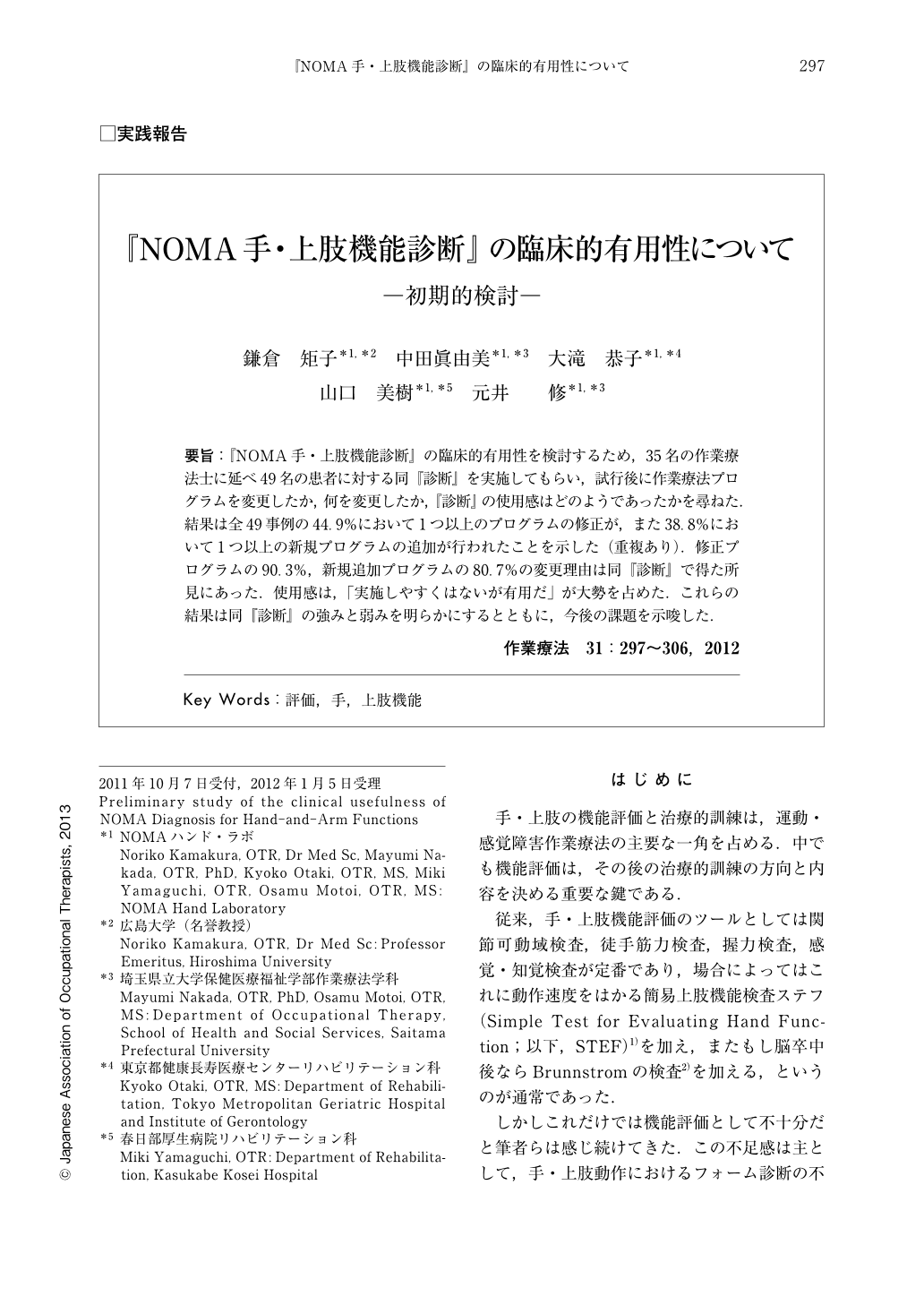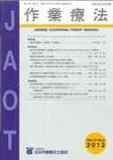Japanese
English
- 販売していません
- Abstract 文献概要
- 1ページ目 Look Inside
- 参考文献 Reference
- サイト内被引用 Cited by
要旨:『NOMA手・上肢機能診断』の臨床的有用性を検討するため,35名の作業療法士に延べ49名の患者に対する同『診断』を実施してもらい,試行後に作業療法プログラムを変更したか,何を変更したか,『診断』の使用感はどのようであったかを尋ねた.結果は全49事例の44.9%において1つ以上のプログラムの修正が,また38.8%において1つ以上の新規プログラムの追加が行われたことを示した(重複あり).修正プログラムの90.3%,新規追加プログラムの80.7%の変更理由は同『診断』で得た所見にあった.使用感は,「実施しやすくはないが有用だ」が大勢を占めた.これらの結果は同『診断』の強みと弱みを明らかにするとともに,今後の課題を示唆した.
Nakada and Kamakura (2007) developed a new evaluation tool, the NOMA Diagnosis for Hand-and-Arm Functions (the NOMA Diagnosis) to enable examination of the static and dynamic forming of hands, as well as to provide a comprehensive menu to examine the multiple aspects of hand and arm functions. The present study intended to clarify if this new evaluation tool could actually provide significant information to the occupational therapists working in clinical settings. Thirty-five occupational therapists were asked to administer the NOMA Diagnosis for one or two patients who suffered from hand and arm dysfunction due to the neurological disease or the traumatic injury, and report if their findings had caused any change of the occupational therapy programs which had been previously initiated. Using a self-report questionnaire, the occupational therapists were also asked how they felt about administering the NOMA Diagnosis upon completion. In total, the Diagnosis was administered to 49 patients and all the questionnaires were completed. The results showed that one or more occupational therapy programs had been modified in each of the 22 cases and one or more new programs had been added in 19 cases after the Diagnosis had been executed. Ninety percent of the modifications and 81% of the new additions were caused by the findings in the NOMA Diagnosis. Modifications occurred mainly in the programs aiming to improve dexterous manipulation, power, or arm positioning. Additions occurred in almost all the categories of programs. As to “Was it easy to administer the Diagnosis?”, the occupational therapists answered “Yes” in 18 of 49 cases, “No” in 8 cases, and “Can't say Yes or No” in 23 cases. Negative or neutral answers were mainly due to the large number of assigned tasks and the requirement for particular knowledge of the postural and movement patterns of hand movements. As to “Was it useful?”, they answered “Yes” in 42 of 49 cases, “No” in 1 case, and “Can't say Yes or No” in 6 cases. The reason for “Yes” was the Diagnosis could help the therapist devise reasonable treatment programs. These results indicate that the NOMA Diagnosis could be much more widely used by occupational therapists if the testing procedures were more simplified and the theoretical principles were more thoroughly known.

Copyright © 2012, Japanese Association of Occupational Therapists. All rights reserved.


